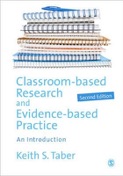Educational Research Methods

A site to support teaching and learning...

The scale of a case
An obvious question about case study work is 'what counts as a case?' and the answer is that potentially the case can be defined in many ways.
Duit and coworkers describe a case of an episode in a particular lesson: considering the “…analysis of one specific classroom discussion episode” (Duit et al., 1998, p.1060). They talk about one group working on one lesson activity, in the context of one class in one school, in the context of one lesson sequence.
Duit, R., Roth, W.-M., Komorek, M., & Wilbers, J. (1998). Conceptual change cum discourse analysis to understand cognition in a unit on chaotic systems: towards an integrative perspective on learning in science. International Journal of Science Education, 20(9), 1059-1073.
However, “the [US] National Institute on Student Achievement, Curriculum, and Assessment…conducted a Case Study of the entire Japanese school system with particular reference to the teaching and learning of Mathematics and Science” (Freebody, 2003, p.80).
Freebody, P. (2003). Qualitative Research in Education: Interaction and Practice. London: Sage.
Britez wrote a PhD thesis: “I have conducted a case study of higher education in Paraguay in order to determine the uses and limitations of the transfer literature in explaining policy developments in the Paraguayan higher education sector since 1989.”
Britez, R. G. (2010). The global politics of policy circulation in higher education: A case study of Paraguay 1998-2008. PhD, University of Illinois at Urbana-Champaign. Retrieved from http://hdl.handle.net/2142/17071
The case needs to be clearly bounded: “A teacher may be a case. But her teaching lacks the specificity, the boundedness, to be a case” (Stake, 1995: 2)
“An innovative program may be a case. All the schools in Sweden can be a case... The case could be a child, it could be a classroom of children or a particular mobilization of professionals to study a childhood condition” (Stake, 1995: 2)
“The case need not be a person or enterprise...An institution, a program, a responsibility, a collection, or a population can be the case. This is not to trivialize the notion of "case" but to note the generality of the case study method[ology].” (Stake, 1978: 7).
Stake, R. E. (1978). The Case Study Method in Social Inquiry. Educational Researcher, 7(2), 5-8.
Stake, R. E. (1995). The Art of Case Study Research. Thousand Oaks, California: Sage.
This is a personal site of Keith S. Taber to support teaching of educational research methods.
(Dr Keith Taber is Professor of Science Education at the University of Cambridge.)
2016-2019
